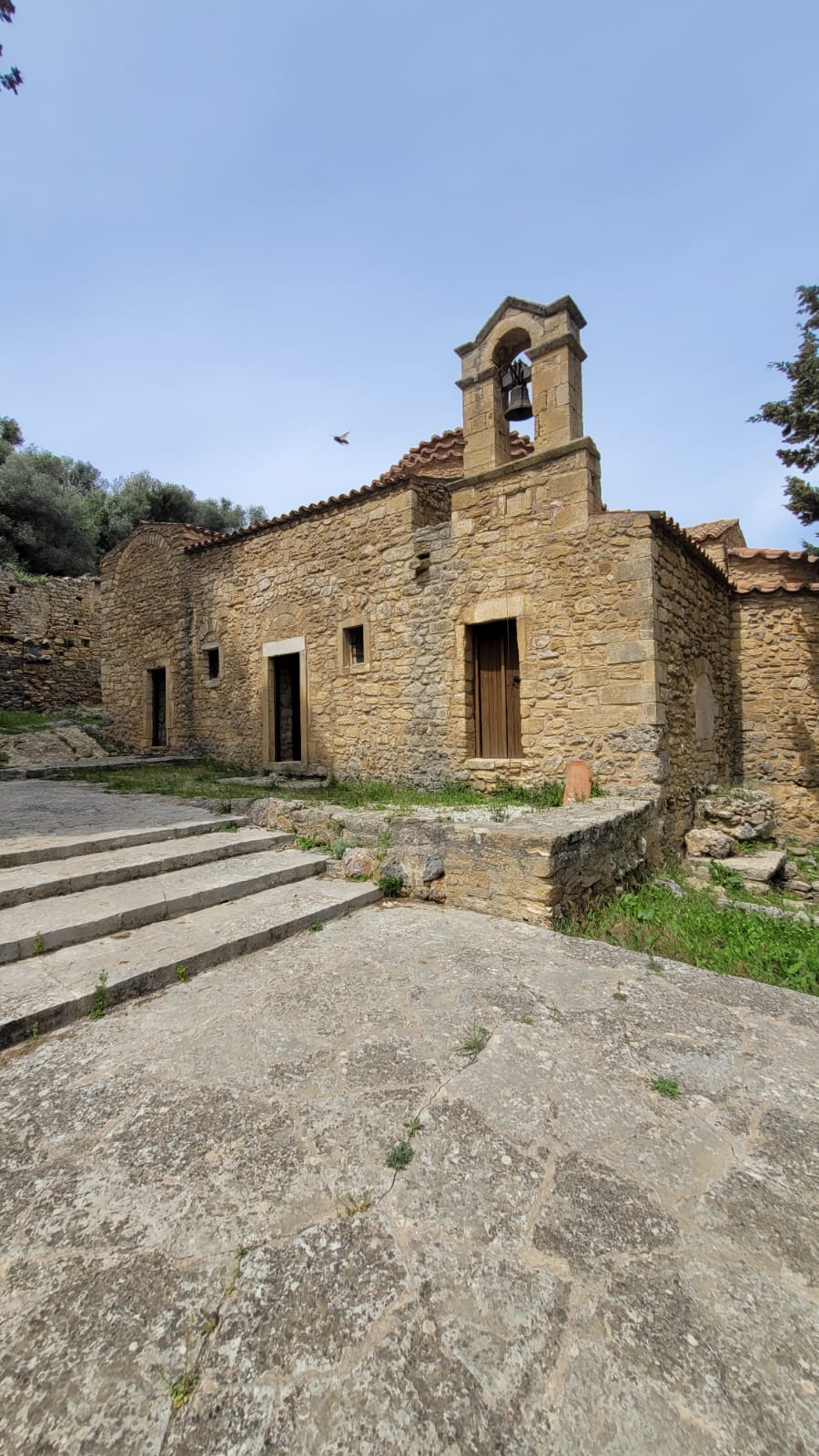
Crete-Mysterious Rotonda: the 6th century Church
Discover the Rich History of the Rotunda Church in Crete
Nestled in the heart of Crete, the charming town of Kissamos boasts a hidden treasure—the Rotunda Church of Michael the Archangel. This ancient Byzantine monument, steeped in history, served as an episcopal residence during the Byzantine II period. Explore the captivating journey of this remarkable site, which has witnessed centuries of tradition and heritage.
The Legacy of Bishop Melchizedek
The Rotunda Church’s history is intertwined with the martyrdom of Bishop Melchizedek, a heroic figure who met his fate at the hands of the Ottomans in 1821 at Splandia Square in Chania. As you visit this place, don’t forget to pay homage to this heroic bishop by stopping by the square and viewing his monument—a testament to courage and resilience.
Architectural Marvel: The Rotunda Church Design
The Rotunda Church, aptly named for its pericentric rectangular plan, boasts a robust exterior and an inner dome crafted from masonry. Its architectural elegance draws parallels with the famed Rotonda Church in Thessaloniki, making it a unique gem in the Balkans. Explore its architectural features, including the west atrium and the east sanctuary niche with a double window.
Mosaic Splendor: The Rotunda’s Artistry
As you step inside the Rotunda, your gaze is met by a breathtaking mosaic floor, a masterpiece from the second half of the 6th century. Marvel at the intricate patterns of plants, animals, and geometric designs, including vines, ivy, fish, and a captivating semicircular frame. Notable features include a cross-shaped font in the south parsonage and a larger font in the circular room, reminiscent of the church’s rich history.
A Tapestry of Frescoes: The Rotunda’s Inner Treasures
The true wonders of the Rotunda lie within its walls. Unearthed during restoration efforts, the Rotunda boasts five layers of frescoes, with some dating back to the 7th century—a testament to its historical significance. Journey through time as you view frescoes depicting the Ascension, the crucifixion of saints in the dome, the Evangelist Matthew in the narthex, and the figures of St. George and the archangel in the sanctuary niche.
Layers of History: Iconoclastic Frescoes and More
Discover the iconoclastic period’s frescoes from the 8th century, featuring anonymous cross images and inscriptions praising the cross’s sanctity. In the 12th century, these treasures were concealed beneath new layers of artwork. Explore the third layer, influenced by Constantinopolitan art, which coincided with the transfer of the Bishopric of Kissamos to the Church of the Archangel Michael. Admire depictions of saints, the ascension, the passion, and scenes from the gospel and Theomantic cycles in the side rooms.
A Restoration Legacy: The Last Two Layers
The Rotunda’s final two layers, dating from the late 13th to the early 14th century, represent a meticulous restoration effort by the workshop of Michael Veneris. These layers safeguard and restore the damaged twelfth-century frescoes, preserving their beauty for generations to come.
Blessing of the Earth’s Fruits
Traditionally, the Rotunda Church celebrates the blessing of the earth’s fruits on the first Sunday of August—an age-old tradition that continues to this day.
Rediscovering the Rotunda: Open for Visitors
Despite periods of closure, the Rotunda Church is now accessible to visitors. Embrace the opportunity to explore this exceptional site, which seamlessly blends antiquity, beauty, and history. For lovers of Byzantine art, the Rotunda stands as a testament to the enduring spirit of heritage and culture in Crete.
